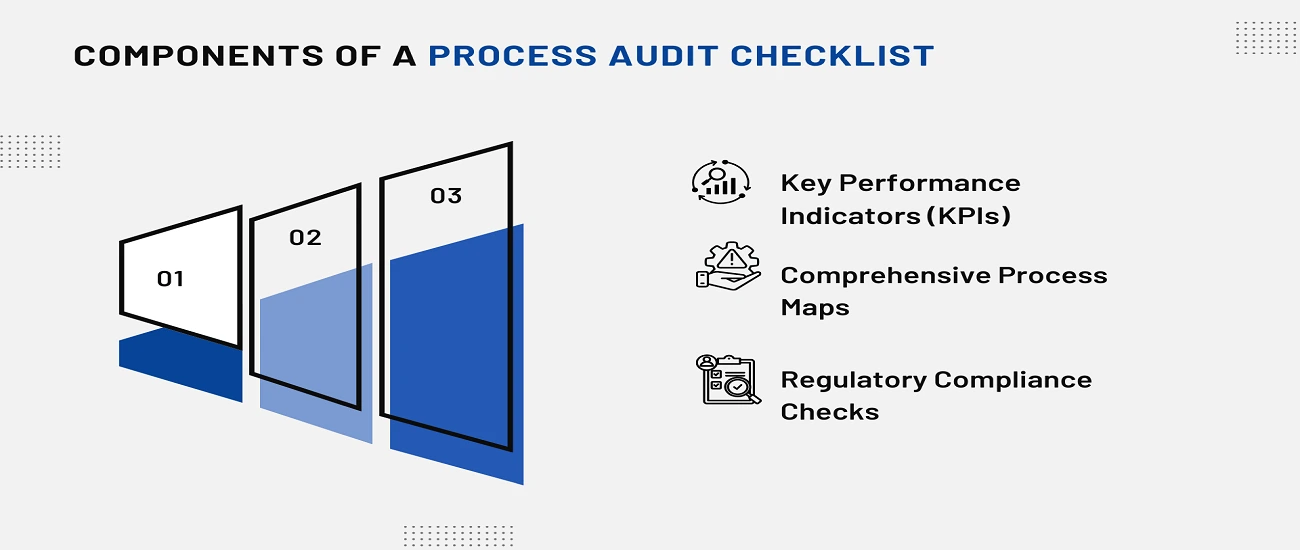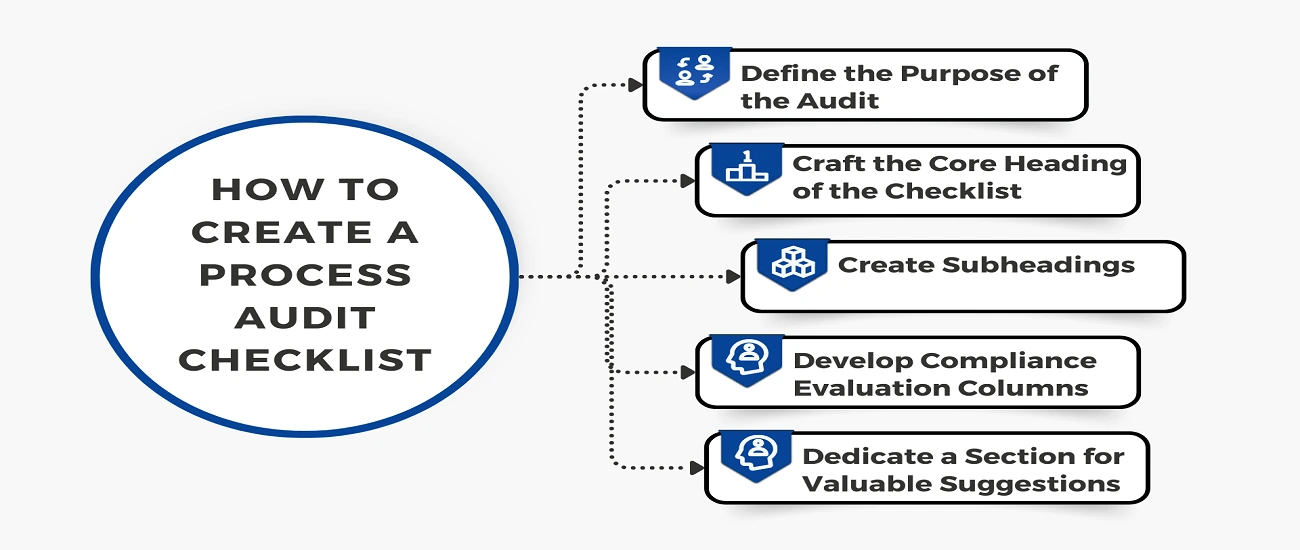Why you need on-site QC inspections even more in the age of AI
2023 was the year when suddenly everybody was talking about AI. The creative industries worried about how generative AI image, sound, and writing ...
By AMREP | Posted on November 21, 2023
Updated on December 12, 2023
A process audit checklist is a tool that helps you to evaluate the performance and compliance of a process against a set of standards or criteria.
In other industries, be it ‘traditional’ ones like legal, banking, insurance and financial services, or more contemporary ones like computer programming, information technology, data analytics, and digital marketing, everybody started talking about how ChatGPT and other AI apps could transform their work.
The process audit checklist is utilized to assess the effectiveness and functionality of your company's various processes in compliance with ISO 9001 requirements.
At AMREP, we strongly urge the regular use of process audits as they are an extremely effective tool in measuring your or your supplier’s performance and identifying improvement areas. Here, we explore what a process audit checklist looks like and best practices for ensuring that your audits are successful and deliver useful insights for your company.

A Process Audit Checklist is a meticulous document designed to systematically assess, evaluate, and enhance the efficiency, compliance, and overall quality of business processes within an organization. It serves as a comprehensive tool for auditing various aspects of operations, ensuring that they align with organizational goals, manufacturing performance expectations, industry standards, and regulatory requirements.

Creating a process audit checklist involves a careful coordination of components. Each item on the checklist is a watchtower, guarding the integrity of the process. Let's examine the components of a potent checklist
These are the vital signs of your process health. From production timelines to error rates, KPIs give life to your checklist, offering real-time insights into the heartbeat of your operations.
Imagine your workflow as a treasure hunt. When you have a clear map, it's like having a guide to every step of the way. This map makes it easy to check everything thoroughly during an audit, leaving no part of the process unexplored.
The checklist is not merely a guide; it's a guardian of legality. Embedding regulatory checks ensures your processes are not only efficient but also compliant with industry standards.
A process audit checklist, can be summarized into three key sections:
While you are creating a checklist for your process audit, remember these steps:

Begin by articulating the specific objectives and goals of your process audit. Understanding the purpose sets the foundation for a focused and effective checklist tailored to your organizational needs.
Formulate a clear and impactful main heading that encapsulates the essence of your audit checklist. This heading acts as a compass, guiding auditors through the evaluation process with a central theme in mind.
Break down the audit into distinct subcategories or processes by creating well-defined subheadings. These subheadings serve as organizational signposts, ensuring that auditors can systematically navigate and assess different facets of your processes.
Construct columns within the checklist specifically for evaluating compliance. Clearly label each column to align with the criteria or key performance indicators (KPIs) pertinent to the respective subheadings, providing a structured framework for comprehensive evaluation.
Allocate a dedicated section in your checklist for auditors to contribute insightful suggestions and feedback. This inclusive approach fosters collaboration, allowing team members to share ideas on process improvement and efficiency enhancement.
Related: What is a Layered Process Audit?
To help you conduct effective process audits, we've shared this Process Audit Checklist template. We would like to highlight though, that this is a generic template and is usually customized to address specific processes.
Audits are scored using these criteria:
Some organisations prefer to use numerical scoring methods to grade compliance.
| Audit Question | Audit Finding | Evidence and Opportunities for Improvement |
|---|---|---|
| Process Definition | ||
| 1. Is the process well-defined and documented? | ||
| 2. Is the process owner clearly identified? | ||
| 3. Are process inputs accurately defined and understood? | ||
| 4. Are process activities accurately defined and understood? | ||
| 5. Are process outputs accurately defined and understood? | ||
| 6. Are inputs defined and prioritized based on risk? | ||
| 7. Are procedures, instructions, and forms established as needed? | ||
| 8. Are procedures, instructions, and forms readily available? | ||
| 9. Are procedures, instructions, and forms readily available? | ||
| 10. Are adequate plans in place to achieve objectives? | ||
| 11. Is relevant customer feedback available? | ||
| 12. Are documents understood by process participants? | ||
| Process Resources | ||
| commitment and resource allocation? | ||
| 14. Is the number of people participating in the process adequate? | ||
| 15. Are participants adequately trained for their roles and responsibilities? | ||
| 16. Is equipment adequate for its intended use? | ||
| 17. Is equipment identified for safe use and readiness? | ||
| 18. Are process owners accountable for performance and compliance? | ||
| 19. Are employees satisfied with their work area? | ||
| 20. Is the work area clean and safe? | ||
| 21. Is there adequate equipment/tools/IT support? | ||
| 22. Are employees motivated and encouraged to suggest process improvements? | ||
| 23. Are all employees aware of organizational objectives and their current status? | ||
| 24. Are all employees aware of their customers and their satisfaction? | ||
| 25. Are employees aware of process metrics they can affect? | ||
| 26. Are they aware of current data analysis related to these metrics and plans? | ||
| Process Execution | ||
| 27. Is the observed process activity consistent with approved plans and procedures? | ||
| 28. Is the process flow designed to minimize unnecessary movement of materials and personnel? | ||
| 29. Are redundant and non-value adding activities minimized? | ||
| 30. Is material usage maximized to avoid waste? | ||
| 31. Is waste material effectively removed and segregated from the process? | ||
| 32. Are unused materials returned to the correct location for re-use? | ||
| 33. Are process inputs passed to subsequent processes only when all planned activities are completed? | ||
| 34. Is there evidence of continuity between support processes? | ||
| 35. Do interfaces between departments operate smoothly? | ||
| 36. Does product information flow freely between support processes? | ||
| 37. Is there evidence of reduced measurement system and process variation? | ||
| Process Monitoring | ||
| 38. Is the process monitored, measured, analyzed, and improved? | ||
| 39. Are monitoring activities carried out according to approved plans and procedures? | ||
| 40. Is process monitoring compared against standards to determine the current status? | ||
| 41. Is process status communicated to appropriate members of the process team? | ||
| 42. Are records of process monitoring maintained according to approved procedures? | ||
| 43. Have key performance indicators (KPI) been established to evaluate the process's effectiveness? | ||
| 44. Are KPIs aligned with quality and business objectives? | ||
| 45. Are KPIs consistent with customer requirements? | ||
| 46. Are KPIs reviewed and communicated to the process team by process leaders? |
| ISO/Specification Ref. Summary | Root Cause | NCR No. | Rectification Date |
| ISO/Specification Ref. Summary | Root Cause | CAR No. | Rectification Date |
| ISO/Specification Ref. Summary | Root Cause | PAR No. | Implementation Date |
Incorporating these best practices into your process audit checklist can make a significant impact on your organization's efficiency, quality, and product manufacturing success.
As your trusted partner in process auditing, AMREP is committed to supporting your journey towards successful manufacturing. Contact us today to learn more about how our services can help you achieve unparalleled efficiency and compliance. With AMREP by your side, your business's success knows no bounds.
Contact Us To See What We Can Do
Call Us
Mon - Sat 9.00 - 18.00
Sunday Closed


21 - November 2023
21
November
2023
2023 was the year when suddenly everybody was talking about AI. The creative industries worried about how generative AI image, sound, and writing ...

05 - October 2023
05
October
2023
Layered Process Audit is a quality tool designed specifically for manufacturing management. It is meant for auditing organizational processes ...

21 - November 2023
21
November
2023
VDA 6.3, an acronym for Verband der Automobilindustrie (German Association of the Automotive Industry), sets the stage for a meticulous examination ...
